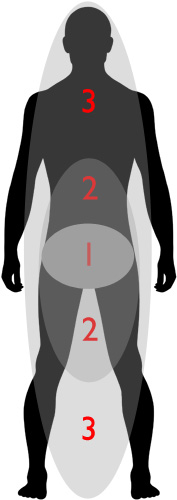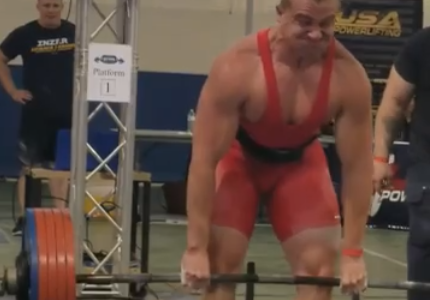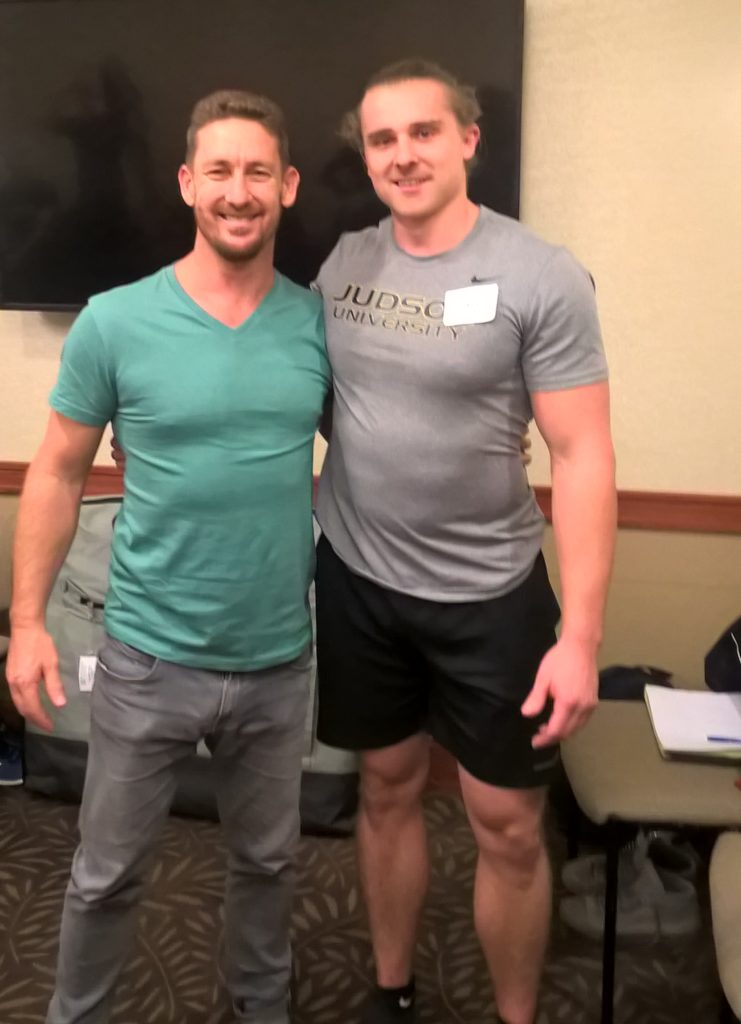You don’t know what you don’t know – Douglas Heel
My body has seen its share of setbacks: Chronic Achilles tendonitis, patellar tendonitis, low back pain, a fractured collarbone, and too many groin strains and ankle sprains to count. After high school athletics, walking on to play college basketball was out of the question.
I was forced to find a new purpose: Get bigger, get stronger, and pursue a career in collegiate strength and conditioning.
Gaining size has been steady – going from 175 lbs. to 225 lbs. in seven years at the same body fat percentage.
My career has seen progress – from interning (D1) to volunteering (D3) to working part-time (D2) to now working full-time (D1) as a strength coach.
But strength gain has been a different story. Lifting heavy (which for me, was a mid-400s squat and mid-500s deadlift) would leave my body banged up with elbow, hip, knee, and back pain. Self-myofascial release, stretching, deep tissue massage, and deload weeks would give short-term relief, but wouldn’t provide lasting change.
That is, until Reflexive Performance Reset.
THE 2 PHILOSOPHIES: BREATHING AND MOVING
Our body has two priorities for survival; to breathe and to move – and without both – we will die! Our body finds ways to meet those priorities, and it’s willing to sacrifice anything else in order to do this. – Douglas Heel
1) BREATHING
Belly breathing puts the body in a relaxed, parasympathetic state where recovery and healing can occur.
Reversal: Chest breathing keeps the body in a stressed, sympathetic state where deep recovery cannot occur. This can also inhibit psoas activity – “When there is a problem in the diaphragm or in any of the structures belonging to this fascia, there will be dysfunction” [1].
In practice: I was a chest breather, but shifted easily to belly breathing. Since switching to belly breathing, I notice an improved ability to deal with physical and mental stress. Recovery from training is drastically shortened.
Babies are the experts on breathing – Douglas Heel
2) MOVING
To move, our hip must flex and extend. Initiating movement from “Zone 1” (the psoas and glutes) puts the body in a state of explosion where muscles are acting outwards to create movement.
Reversal: When the glutes and psoas don’t initiate movement, the body compensates. This puts the body in a state of implosion where other muscles have to do the job of the psoas and glutes before doing their own job. For hip flexion, compensations can come from the quadriceps and abs, or the tibialis, jaw, or opposite arm. For hip extension, this can come from the hamstrings or opposite-side quadratus lumborum.
In practice: When put up to isolated muscle testing, my glutes and psoas did not test well. No glutes meant recurrent QL and hip pain, hamstring tightness, and groin strains. No psoas meant limited dorsiflexion and elbow and knee pain. All these problems were improved and sometimes eliminated after a few activation sessions.
RESULTS
After a few months of implementing the RPR system, and ingraining the Zone 1 pattern, these were my results:
Back Squat:
440 to 507 (+67 lbs.)
Deadlift:
562 to 600 (+38 lbs.)
Front Squat:
335 to 390 (+55 lbs.)
Trap Bar Deadlift:
555 to 635 (+80 lbs.)
And this was all done in a Cluster Hypertrophy phase, training at 65-75% intensities (I wrote about this type of set/rep scheme for EliteFTS). This played a huge part in keeping my Zone 1 pattern, as the intensities weren’t high enough to cause me to resort to old compensations.
THE NEXT STEP
RPR has changed the way I train – because it works. It has immediately impacted my ability to prevent injuries and increase performance. I teach self-activation and belly breathing in every training session to all athletes I work with at Youngstown State University. I implore every athlete and strength coach to check out these sources to learn more:
Be Activated – Douglas Heel’s website where you can learn about his Be Activated system.
Reflexive Performance Reset – Where you can sign-up at clinics to learn RPR.
NOTES FROM CHICAGO’S BE ACTIVATED COURSE
The body needs to be safe in order to heal.
Test & Retest: You need to see what happens before intervention and after – As long as it’s getting results, who cares? Did it work, yes or no?
At Nazareth, injuries decreased by 53% by implementing breathing.
The environment you create for yourself can be an advantage or disadvantage.
Rehab doesn’t matter until a compensation pattern is gone.
We have got to become specialists in knowing what you don’t know you don’t know.
Survival is only about survival.
A good coach is someone who is a human being first.
Unlock the sympathetic nervous system and people can see peripherally because Fight or Flight is only about what’s in front of you.
Prerequisite of an awesome psoas – lumbar must be able to move. Neutral pelvis is rubbish, it must move.
Hip flexion must allow the lumbar spine to drop backwards (acting as a shock absorber). If it doesn’t work it is static. This could be the cause of bulging discs (from narrowing space).
A tight core implodes lumbar, the neck becomes the abs, the abs becomes psoas.
Role of abdominals is to communicate, rotation relays it.
Winging scapula is from a ribcage that is pulled down (collapsed).
Challenge the status quo (politics) so you have the power. If you buy-in to it, you can’t be effective.
Point of Focus starts by being aware that it’s there.
The more you know yourself, the safer your client will feel, and the better results they will get.
If I need to be the fixer, it’s a codependent relationship (help them solve, don’t be the solver).
Listen, don’t direct (“How do you feel?”, not “What is great about how you feel?”).
Focus on all the people you can help, not the one you can’t (stay here, don’t get distracted).
Stretching before activity (takes away the compensation pattern without replacing it) – increases risk.
Breathing is independent of movement. By bracing, you shut down glutes, psoas, diaphragm. It is not the right thing.
TESTIMONIALS
See what people are saying here.
Be Activated is the system that brought about Reflexive Performance Reset. Be Activated is taught mainly outside the U.S. RPR is taught in the states and is geared towards the athlete/coach.
Share on Facebook & Join the Conversation
REFERENCES
[1] Bordoni, B. & Zanier, E. (2013). Anatomic connections of the diaphragm: influence of respiration on the body system. Journal of Multidisciplinary Healthcare, 6, 281-91.




